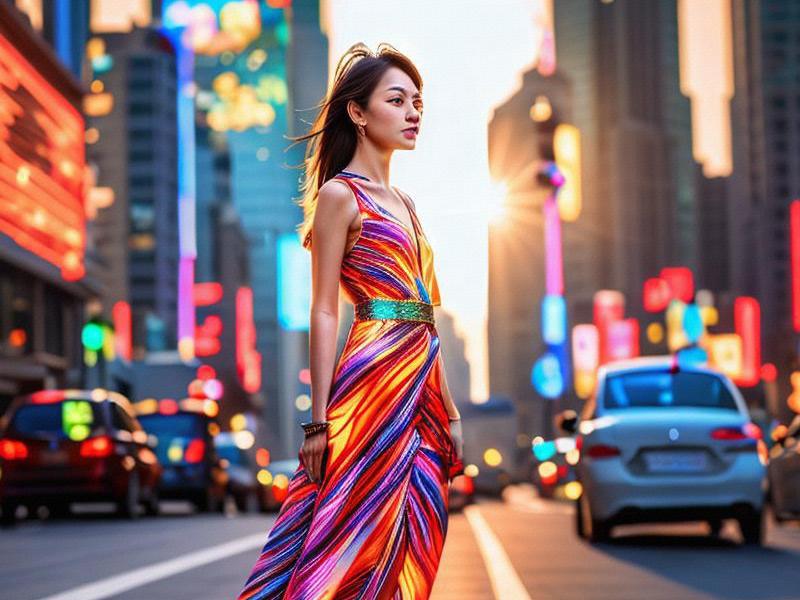This article delves into the history and culture of Shanghai beauties, exploring their influence on the city's fashion, social customs, and the evolution of women's roles in Shanghai society. Through historical anecdotes, fashion trends, and the changing social landscape, we will uncover the unique charm of Shanghai beauties and their enduring legacy in the city's cultural fabric.

Shanghai, a city that has long been synonymous with elegance and sophistication, has a rich history of beauty that is deeply intertwined with its cultural evolution. The term "Shanghai Beauties" refers not only to the physical attractiveness of the women from this city but also to the cultural phenomenon that has shaped and been shaped by the unique social dynamics of Shanghai.
The concept of the "Shanghai Beauty" emerged in the late 19th and early 20th centuries, during the period when Shanghai was known as the "Paris of the East." This was a time when the city was a melting pot of Chinese and Western cultures, and its women became symbols of modernity and fashion. The Shanghai Beauties were known for their graceful demeanor, stylish attire, and progressive attitudes, which set them apart from the traditional Chinese women of the time.
One of the most notable aspects of the Shanghai Beauties was their fashion sense. Influenced by Western styles, they embraced modern clothing such as cheongsams (qipaos), which were tailored to accentuate the female figure. These dresses, with their high slits and intricate designs, became a hallmark of Shanghai's fashion scene and were often adorned with Western-style accessories like pearl necklaces and silk scarves. The cheongsam not only symbolized the blend of Eastern and Western cultures but also represented the liberation of women from the restrictive clothing of the past.
夜上海最新论坛 The social changes in Shanghai also played a significant role in shaping the image of the Shanghai Beauties. As the city became more industrialized and cosmopolitan, women began to participate in public life, working in offices, shops, and even entertainment industries. This new role for women was a departure from the traditional Confucian ideals that emphasized domesticity and subservience. The Shanghai Beauties were often portrayed as independent, educated, and career-oriented, embodying the spirit of the modern woman.
The cultural impact of the Shanghai Beauties extended beyond fashion and social roles. They became the subject of literature, art, and film, often depicted as glamorous and enigmatic figures. In the 1930s and 1940s, Shanghai was a hub for the Chinese film industry, and many actresses who were considered Shanghai Beauties became household names. Figures like Zhou Xuan and Bai Yang not only captivated audiences with their beauty but also with their talent and charisma. Their on-screen personas often reflected the complexities of modern life in Shanghai, navigating between tradition and modernity, love and ambition.
The legacy of the Shanghai Beauties continues to influence contemporary Shanghai. The city remains a fashion capital, with its streets lined with designer boutiques and its women known for their impeccable style. The cheongsam, once a symbol of the Shanghai Beauties, has evolved over time but still remains a popular choice for formal occasions and as a representation of Chinese culture.
上海贵族宝贝龙凤楼
In addition to fashion, the spirit of the Shanghai Beauties is evident in the city's progressive attitudes towards women. Shanghai has long been a leader in gender equality, with a high percentage of women in the workforce and in leadership positions. The city's universities and professional schools have produced generations of educated and accomplished women who continue to shape various sectors of society.
However, the image of the Shanghai Beauties is not without its complexities. The term has sometimes been criticized for objectifying women and reducing them to mere symbols of beauty. In recent years, there has been a movement to redefine the concept of the Shanghai Beauty, emphasizing qualities such as intelligence, independence, and creativity rather than just physical appearance.
上海花千坊龙凤 The story of the Shanghai Beauties is also a reflection of the broader social and historical changes in China. From the colonial era to the rise of the People's Republic of China, Shanghai has been at the forefront of cultural and social transformations. The experiences of the Shanghai Beauties mirror the struggles and triumphs of Chinese women in a rapidly changing society.
In conclusion, the Shanghai Beauties are more than just a historical phenomenon; they are a symbol of the city's rich cultural heritage and its ongoing evolution. Their legacy is evident in the city's fashion, social customs, and the empowerment of women. As Shanghai continues to grow and modernize, the spirit of the Shanghai Beauties remains a source of inspiration, reminding us of the importance of elegance, independence, and the pursuit of one's dreams.
The Shanghai Beauties have left an indelible mark on the city's history and culture, and their story continues to captivate and inspire. Whether through the pages of a novel, the silver screen, or the bustling streets of modern Shanghai, the legacy of the Shanghai Beauties lives on, a testament to the city's unique blend of tradition and modernity.